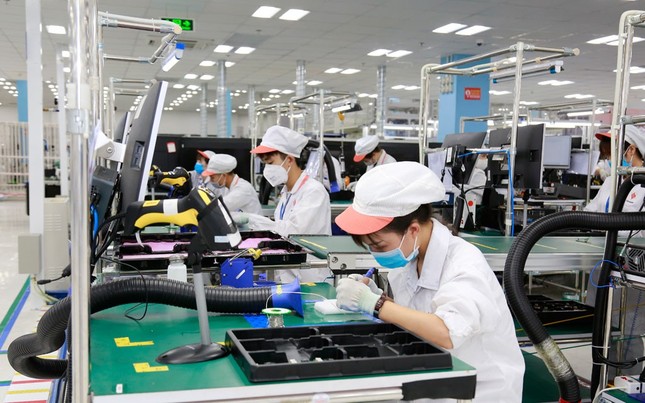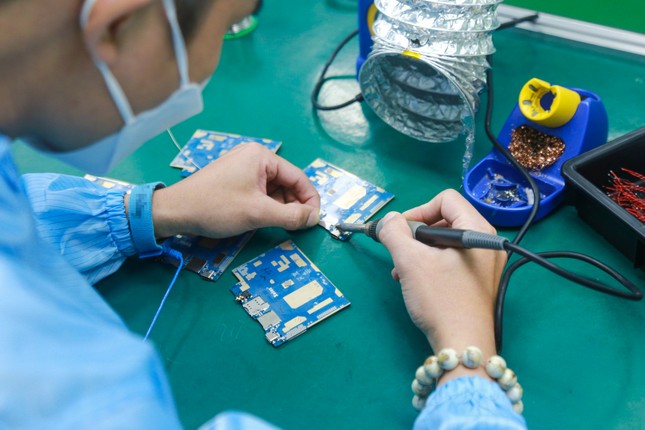This is the sharing of Mr. Vu Quoc Huy – Director of the National Innovation Center (NIC) – with the press on the occasion of the Lunar New Year. Mr. Huy expressed his confidence that in the near future, Vietnam will become a reliable partner and an important link in the global semiconductor value chain.

Mr. Vu Quoc Huy – Director of NIC.
According to Mr. Huy, in the context of the semiconductor value chain tending to shift to Southeast Asian countries, Vietnam has all the necessary conditions to develop this industry. Stable political system, favorable geographical location, attractive investment policy incentives, abundant technical – technological human resources, and increasingly developed infrastructure. The government is highly determined in pursuing and developing the semiconductor industry, attracting more and more large corporations in the industry.
According to the Ministry of Information and Communications, global semiconductor industry revenue in 2021 reached $551 billion and is projected to exceed $1,000 billion by 2031
However, the Director of the NIC also frankly pointed out that the semiconductor industry poses many challenges. The first thing Mr. Huy mentioned is high investment. In reality, building a chip foundry can cost up to $50 billion.
In addition, the semiconductor industry is under high competitive pressure, especially from countries like China, the United States, and Europe. These countries/regions have announced their plans for their chip sector ranging from $50 to $150 billion.
The challenge posed by technology is also significant, requiring significant investments in R&D to maintain competitiveness. The demand for high-quality personnel is immense, and in reality, according to Mr. Huy, Vietnam’s human resources are only in the early stages, with skills and qualifications that are not enough to meet the needs of businesses.

Vietnam is only active in the design and packaging stage, with no semiconductor production factories (photo: VGP).
With 3 stages of the semiconductor industry value chain (design, production, testing, and packaging), Mr. Huy said that Vietnam is only active in the initial and final stages. Currently, Vietnam has no semiconductor production factories.
In the design stage, recruitment needs depend on the number of companies in the market. Sending engineers abroad to work depends heavily on the quality and ability to meet technical and language requirements of trained personnel in Vietnam.
“The demand for semiconductor industry human resources in Vietnam is forecasted to be about 15,000 design engineers by 2030 (14,000 for domestic demand and 1,000 for foreign demand) and 35,000 engineers in other stages.
This means that the number of semiconductor design companies will triple the current number to about 100 companies, with about 150 engineers per company, and about 15 semiconductor packaging factories with an average investment capital of $1 billion and an average scale of about 2,300 engineers per factory,” Mr. Huy calculated.

Focusing on training semiconductor engineers is identified as a strategic direction (photo: Giang Thanh).
With abundant human resources, the Director of NIC believes that Vietnam has a great advantage in training high-quality human resources in the field of engineering and technology. However, focusing on training engineers in the semiconductor industry has not been emphasized, creating a large gap between supply and demand in the industry.
To develop the semiconductor industry to match its existing advantages, the Ministry of Planning and Investment is focusing on building a high-quality human resources development plan, with 50,000 human resources by 2030, expect to provide enough for domestic businesses and labor export to developed markets.
Along with that, building mechanisms and policies to attract and utilize foreign investment; investing in the construction of R&D centers, creating a favorable environment for Vietnamese researchers and businesses to access new technologies.
Vietnam has attracted investment from large companies in the chip manufacturing industry such as Intel, Samsung, Armkor, and Foxconn. Last year, the Semiconductor Industry Association (SIA) and Nvidia Corporation came to Vietnam, highly evaluating the potential and development opportunities of the domestic semiconductor industry.




































